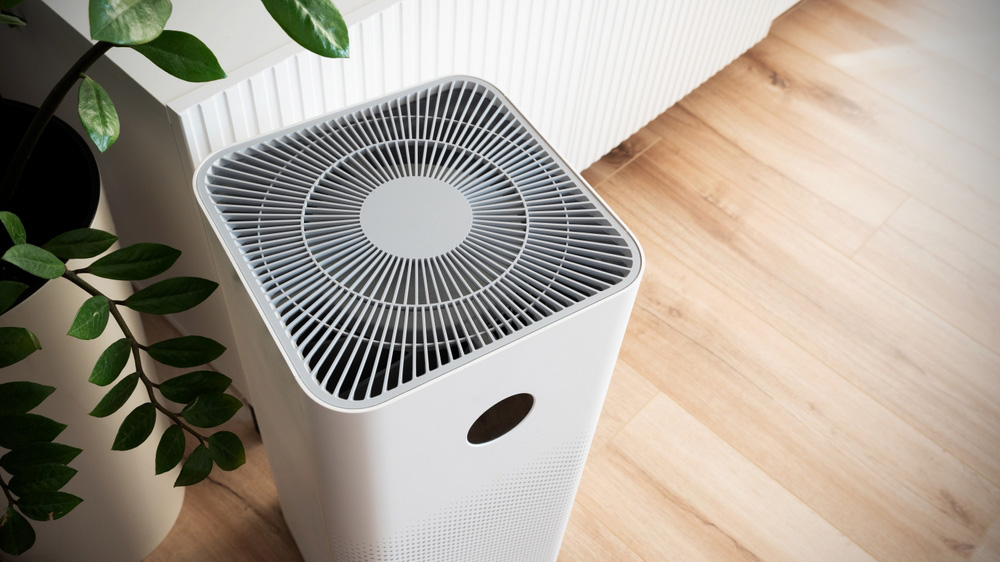Are you truly breathing clean, healthy air, or unknowingly sharing your living space with an invisible cocktail of harmful particles? The issue of air quality is no longer a luxury but an urgent matter for our well-being. Natural ventilation, state-of-the-art purification systems—these unsuspected allies are key to a healthy environment and robust health. Ready to be captivated by a breath of fresh air? Let’s dive in together!
Air Quality: A Vital Issue
The air we breathe is far from insignificant. On average, an adult inhales nearly 15,000 liters of air per day. This means that every particle in that air finds its way into our lungs, influencing our health and well-being. According to the World Health Organization (WHO), poor air quality can lead to respiratory problems, cardiovascular diseases, and even reduce life expectancy.
Indoors, the situation isn’t much better. Domestic pollutants, such as volatile organic compounds (VOCs) emitted by paints and furniture, fine particles from cooking, or mold, threaten our health. It becomes crucial to find solutions to breathe clean air, whether at home, in the office, or in public places.
Air Ventilation: The Art of Air Circulation
Why Ventilate?
Ventilation is the first step in maintaining healthy air. It helps expel accumulated pollutants and bring in fresh, oxygen-rich air. Proper ventilation reduces humidity risks, prevents mold growth, and improves overall comfort. Additionally, it contributes to better concentration and productivity—perfect for excelling at work or solving Sudoku puzzles!
Different Ventilation Systems
There are several types of ventilation, each with its advantages:
- Natural Ventilation: Effective in temperate regions, it relies on airflows through strategic openings (windows, air vents).
- Mechanical Ventilation Systems: These automated systems regulate incoming and outgoing air. Advanced systems, like double-flow ventilation, recover heat from stale air to preheat incoming fresh air, benefiting both your wallet and the environment!
Air Purification Systems: A Breath of Innovation
How Purifiers Work
Air purifiers are devices equipped with filters that capture fine particles, allergens, VOCs, and sometimes even viruses. They often combine technologies like HEPA filters, activated carbon, or UV-C lamps to disinfect the air.
Health Benefits
Studies show that air purifiers can significantly reduce allergy symptoms, asthma, and even improve sleep quality. Imagine waking up without repeated sneezing or enjoying a full night’s sleep like a baby—the dream!
Choosing the Right Device
To get the most out of these systems, choose a purifier suited to your room’s size, with sufficient airflow and certified filters. Connected models even allow real-time air quality monitoring—the future is now!
A Winning Combination for a Healthy Environment
To create the ideal indoor environment, combining proper ventilation with an air purification system is the ultimate solution. While ventilation ensures constant air renewal, purifiers deeply clean it. Together, they create a perfect setting for your physical and mental well-being.
Take schools or hospitals, where air quality is crucial. The benefits are immediate: fewer transmissible diseases, better concentration for children, and faster recovery for patients.
Practical Tips
- Regularly Air Out: Open your windows for at least 15 minutes a day, even in winter.
- Maintain Your Systems: Clean your purifiers’ filters and inspect your ventilation systems to prevent malfunctions.
- Avoid Pollution Sources: Opt for natural cleaning products and limit the use of scented candles or incense.
- Monitor Air Quality: Connected sensors can alert you in case of pollution peaks.
Conclusion
Nothing is more precious than the air we breathe. Investing in proper ventilation and air purification systems means choosing a healthier future for ourselves and our loved ones. So, ready to make your home a breathable haven of peace? Inhale, exhale, and savor the clean air around you. Well-being is just a breath away!
Sources :
- World Health Organization (WHO) – « Indoor Air Quality Guidelines » (who.int)
- Environmental Protection Agency (EPA) – « The Importance of Ventilation » (epa.gov)
- Harvard T.H. Chan School of Public Health – « The Effects of Air Quality on Cognitive Function » (hsph.harvard.edu)
- American Lung Association – « Improving Indoor Air Quality » (lung.org)
- National Institute of Environmental Health Sciences – « Air Pollution and Health » (


